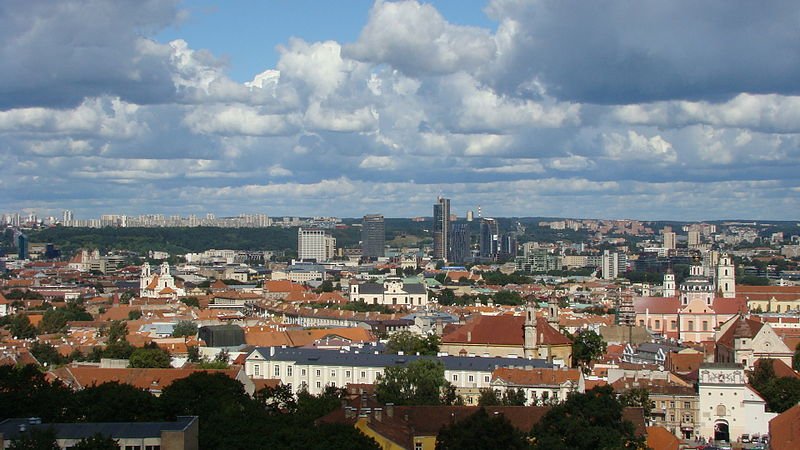 Panoramic view of Vilnius
Panoramic view of VilniusSource: https://commons.wikimedia.org/wiki/File:Panorama_of_Vilnius.JPG
Author: Umnik

Vilnius is the capital and biggest city in Lithuania. It is located on the eastern part of the country, not far from the border with Belarus. The city covers 401 sq km (154.8 sq mi) and has a population of 560,000 (2011 estimate), within a metropolitan area (Vilnius County) that has a population of 850,000. The Historic Centre of Vilnius is recognized as a World Heritage Site.
Vilnius is in the Eastern European Time zone, which is two hours ahead of Coordinated Universal Time (UTC+2), and three hours ahead during Daylight Saving Time in summer. It was named after the Vilnia River. Vilnius is located at the confluence of the Vilnius River with the Neris River.
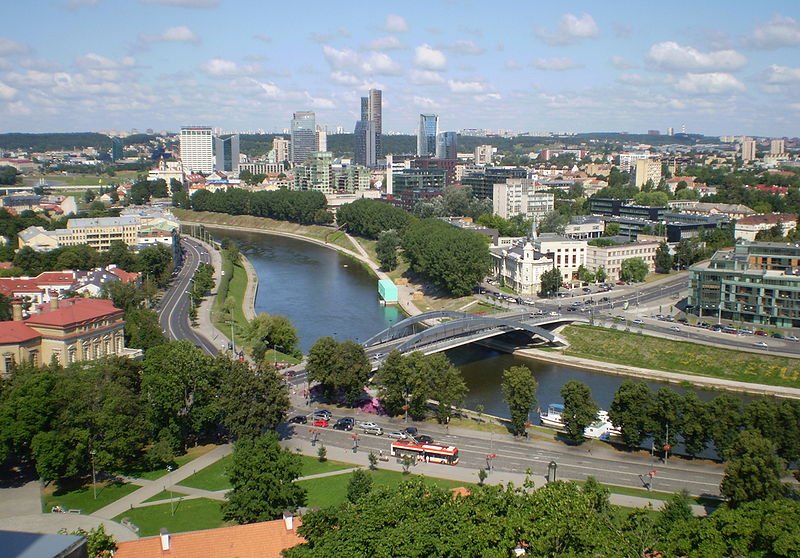 Vilnius River flowing through the city of Vilnius
Vilnius River flowing through the city of VilniusSource: https://commons.wikimedia.org/wiki/File:Vilnius_river.jpg
Author: Kulmalukko

Vilnius experiences a humid continental climate. The warmest month here is July, when average temperature regularly reaches 22.1°C (71.8°F). January is the coldest month, with average temperature of -8.7°C (16.3°F). The warm months of June and July are also the wettest, with July receiving 78 mm (3.07 in) of precipitation.
The city of Vilnius was first mentioned in history in 1323, when it appears in the Letters of Grand Duke Gediminas. At that time, the city was already mentioned as a capital of the Grand Duchy of Lithuania. It was ruled by the Grand Duke Gediminas, who in the 14th century, made Vilnius capital over an area encompassing modern-day Lithuania as well as Belarus, Ukraine, and parts of Poland and Russia.
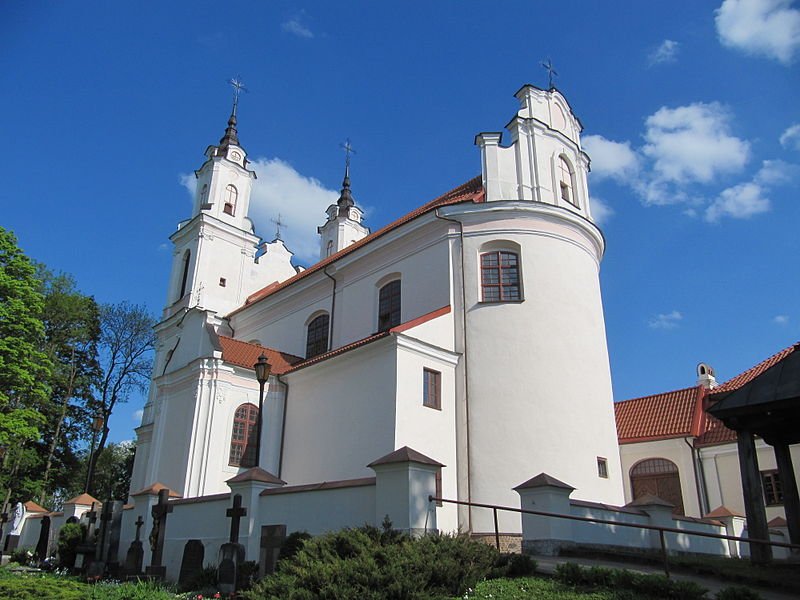 Church of the Holy Cross, Vilnius
Church of the Holy Cross, VilniusSource: https://commons.wikimedia.org/wiki/File:Calvarija5.jpg
Author: Rartat

The later part of the 14th century was a turbulent period for Lithuania, as the grandchildren of Gediminas fought each other for control over the country. This culminated in a treaty that created the Polish-Lithuanian Commonwealth in 1569. The commonwealth was at its peak in the 16th century.
By the 17th century, it was beginning to suffer setbacks, as it lost in a series of wars, resulting in lost of territories. Fires and plague further added to its misery, and in 1795, it was annexed by the Russian Empire. Under Russian lordship, the Lithuanians suffered myriads forms of discrimination, from the prohibition to use their language to the curtailment of their civil liberties. Any form of unrest was brutally suppressed, as happened in 1831 and 1861.
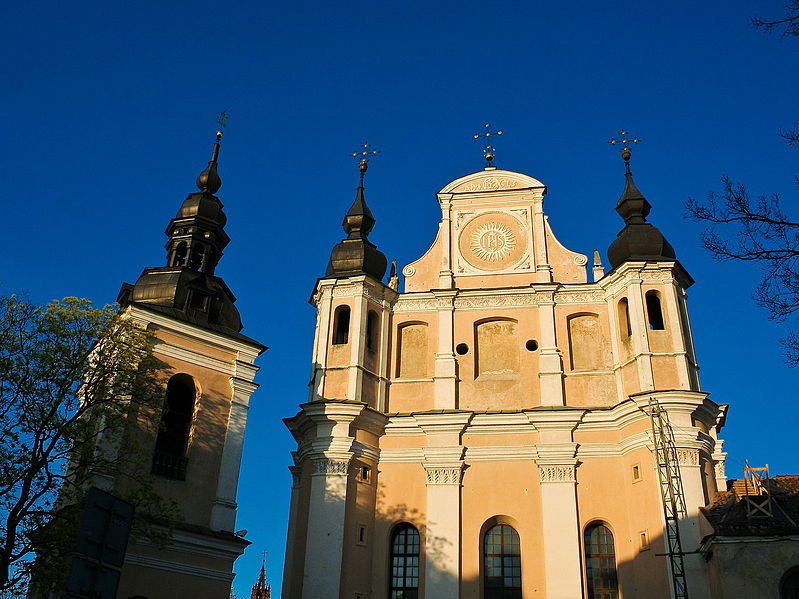 Church of St Michael, Vilnius
Church of St Michael, VilniusSource: https://commons.wikimedia.org/wiki/File:St._Michael%27s_Vilnius.jpg
Author: Gailė Paštukaitė

Lithuania was finally released from Russian clutches following World War I. It declared its independence in 1918. For a while it was again under Soviet rule, but regained its neutrality with the Soviet-Lithuanian Treaty of 12 July, 1920. The freedom was shortlived, for Poland invaded it in October 1920, and officially annexed it as part of Poland in 1922. Under Polish rule, Vilnius lost its position as national capital of Lithuania to the city of Kaunas.
The Second World War brougtht another wave of change. Nazi Germany invaded Poland in September 1939. At the same time, the Soviet Union also launched its invasion of Poland, and on 19 September, it captured Vilnius. This time Vilnius was annexed into Byelorussian SSR, the Belarusian language was introduced in schools.
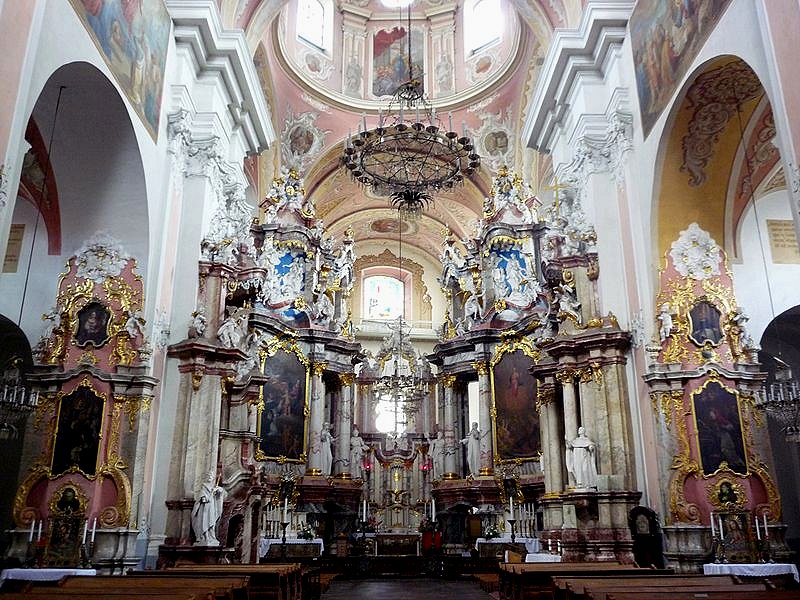 Interior of the Church of the Holy Spirit, Vilnius
Interior of the Church of the Holy Spirit, VilniusSource: https://commons.wikimedia.org/wiki/File:HSpirit-inside.jpg
Author: Fczarnowski

More change was to come when in 1941, Nazi Germany launched its offensive against the Soviet Union and captured Vilnius on 24 June. This time the Jews in Vilnius suffered greatly. Under German occupation, 95% of the 265,000 Jews in Vilnius were murdered by the Nazis and their local Lithuanian collaborators.
The Red Army recaptured Vilnius from the Nazis in July, 1944. It was made the capital of the Lithuanian SSR, a component state of the Soviet Union. Lithuania was to remain under the Soviet orbit until the USSR collapsed in 1989. On 11 March 1990, it boldly announced its secession, a move that invited Soviet troops. The Soviet Union eventually recognized Lithuanian independence in August, 1991.
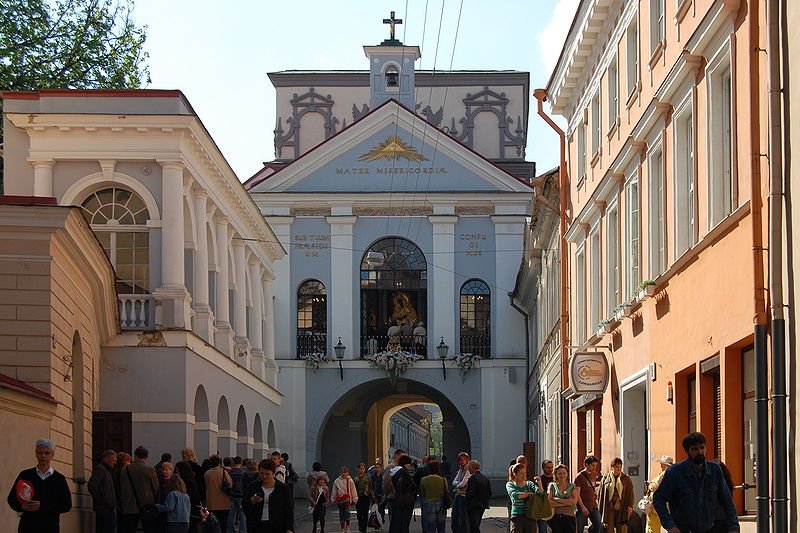 Gate of Dawn, Vilnius
Gate of Dawn, VilniusSource: https://commons.wikimedia.org/wiki/File:Vilnius_Dawn_Gate.jpg
Author: sfu

The decades of upheaval has changed the composition of Vilnius. Until the Second World War, it has a substantial Jewish community. This was wiped out by the Nazis. Its tangible heritage has fared better.
Vilnius is today a modern city with an increasing number of high rises. The tallest skyscraper in the city is Europa Tower, standing at 129 meters (423 ft). Although it has modernized substantially, it has managed to preserve many of its old building. Its historic Old Town has been recognised as a World Heritage Site since 1994.
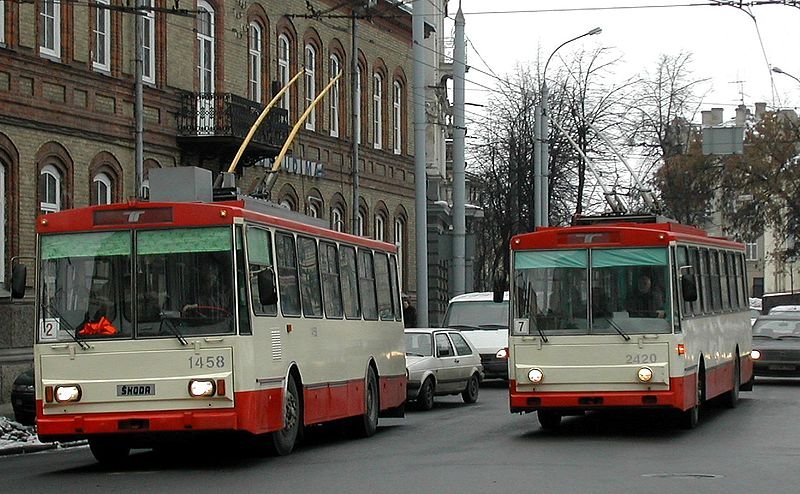 Trolleybuses in Vilnius
Trolleybuses in VilniusSource: https://commons.wikimedia.org/wiki/File:Skoda-Vilnius3.jpg
Author: Foma

Visiting Vilnius, Lithuania
The Vilnius International Airport (VNO) is 6 km to the south of downtown. It receives flights mostly from European cities. Arriving at the airport, you have the option of taking the bus, train or taxi to downtown Vilnius. Bus 1 goes to the Vilnius Railway Station while Bus 2 goes to the city center and business district. Tickets can be purchased from the driver. The fare is 2.50 LTL. There are trains to the Vilnius Railway Stations too. The ride only takes about 7 minutes and costs 2.50 LTL.Exploring Vilnius
The city of Vilnius is served by buses and trolleybuses. You can either pay for a single ride ticket, which you can buy directly from the driver for 2.50 LTL, or get the Vilnius City Card, which allows unlimited rides over a specific duration.Places of Interest in Vilnius, Lithuania
Churches and Cathedrals- Bernardine Church
- Church of St Anne
- Church of St Casimir
- Church of St Catherine
- Church of St Michael
- Church of St Nicholas
- Church of St Paraskeva
- Church of St Theresa
- Church of the Holy Spirit
- Dominican Church
- Franciscan Church
- Holy Mother of God Church
- Orthodox Church of St Nicholas
- St John's Church
- Vilnius Cathedral
- Applied Arts Museum
- Čiurlionis House
- Contemporary Art Center
- Holocaust Museum
- Kazys Varnelis Museum
- KGB Museum
- Mickiewicz Museum
- Lithuanian National Museum
- Šlapelis House Museum
- State Jewish Museum
- Theater, Music and Film Museum
- Vilnius Picture Gallery
- Artillery Bastion
- Basilian Gate
- Cathedral Square
- Frank Zappa Statue
- Gates of Dawn
- Hill of Three Crosses
- House of Signatories
- Lower Castle
- Presidential Palace
- Radvila Palace
- Town Hall Square
- Upper Castle
- Vilnius University
 Latest updates on Penang Travel Tips
Latest updates on Penang Travel Tips
 Discover with Timothy YouTube Channel
Discover with Timothy YouTube Channel
 PG Food Channel
PG Food Channel
 Learn Penang Hokkien YouTube Channel
Learn Penang Hokkien YouTube Channel
 SojiMart Videos
SojiMart Videos
Latest from Discover with Timothy: Gurney Bay - what to see and do there
About this website

Hello and thanks for reading this page. My name is Timothy and my hobby is in describing places so that I can share the information with the general public. My website has become the go to site for a lot of people including students, teachers, journalists, etc. whenever they seek information on places, particularly those in Malaysia and Singapore. I have been doing this since 5 January 2003, for over twenty years already. You can read about me at Discover Timothy. By now I have compiled information on thousands of places, mostly in Peninsular Malaysia and Singapore, and I continue to add more almost every day. My goal is to describe every street in every town in Malaysia and Singapore.
Robbie's Roadmap
- Episode 1: Robbie's Journey to Financial Freedom
- Episode 2: Lost in America
- Episode 3: The Value of Money
- Episode 4: The Mentor
- Episode 5: The Thing that Makes Money
- Episode 6: The walk with a Billionaire
- Episode 7: The Financial Freedom Awakening
- Episode 8: Meet Mr Washington
- Episode 9: The Pizzeria Incident
Copyright © 2003-2024 Timothy Tye. All Rights Reserved.


 Go Back
Go Back